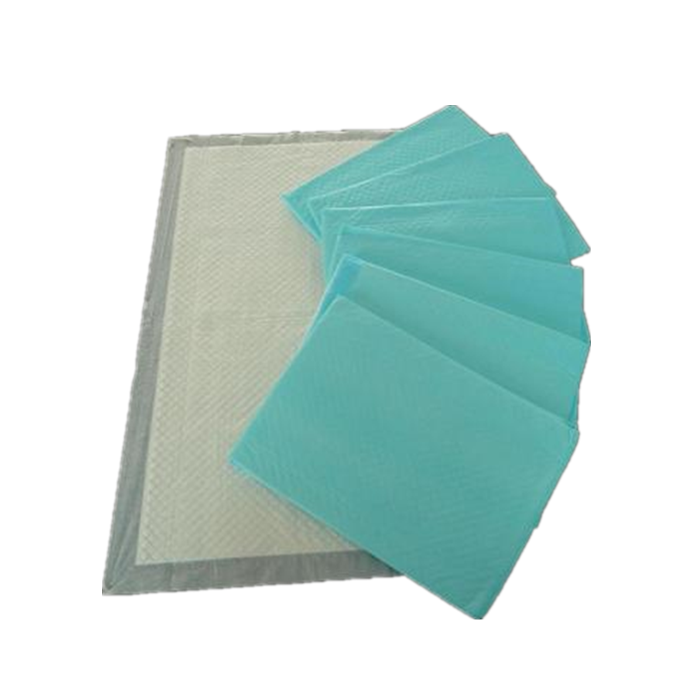In today’s world, sustainability has become a key consideration in every industry, including healthcare and personal care. One area where eco-conscious choices are making a significant impact is in the use of under pads—absorbent pads designed for incontinence care, bed protection, and post-surgical recovery. Traditional under pads often contain plastics and non-biodegradable materials, contributing to environmental pollution. However, eco-friendly under pads are emerging as a sustainable alternative, offering both high performance and environmental benefits.
This article explores the importance of sustainable under pads, their benefits, materials used, and how they contribute to a greener future in caregiving.
The Environmental Impact of Traditional Under Pads
Conventional under pads are typically made from polyethylene (plastic) backings, superabsorbent polymers (SAP), and synthetic fibers. While effective in absorbing liquids, these materials pose several environmental challenges:
- Non-Biodegradability – Plastic-based under pads can take hundreds of years to decompose, contributing to landfill waste.
- Chemical Pollution – Some disposable pads contain harmful chemicals that can leach into soil and water.
- Carbon Footprint – The production of synthetic materials relies on fossil fuels, increasing greenhouse gas emissions.
Given the growing demand for incontinence products (especially with an aging population), switching to eco-friendly under pads is a crucial step toward reducing waste and protecting the planet.
What Makes an Under Pad Eco-Friendly?
Eco-friendly under pads are designed with sustainability in mind, using materials that are:
- Biodegradable – Break down naturally without harming the environment.
- Compostable – Can decompose into organic matter under proper conditions.
- Made from renewable resources – Such as plant-based fibers instead of petroleum-based plastics.
- Free from harmful chemicals – Avoiding chlorine, latex, and toxic adhesives.
Common Sustainable Materials Used
- Bamboo Fiber – Naturally antibacterial, highly absorbent, and biodegradable.
- Organic Cotton – Soft, breathable, and free from pesticides.
- Plant-Based PLA (Polylactic Acid) – A biodegradable plastic alternative derived from cornstarch.
- Recycled Pulp – Reduces the need for virgin wood pulp, lowering deforestation impact.
- Water-Based Adhesives – Non-toxic and environmentally safe.
These materials ensure that the under pads provide comfort, absorbency, and protection while minimizing ecological harm.
Benefits of Eco-Friendly Under Pads
1. Reduced Environmental Waste
Unlike traditional pads that sit in landfills for centuries, biodegradable under pads decompose much faster, especially in commercial composting facilities.
2. Healthier for Users
Many conventional pads contain fragrances and chemicals that can irritate sensitive skin. Eco-friendly options are hypoallergenic and free from harmful additives, making them safer for elderly users, post-surgery patients, and babies.
3. Lower Carbon Footprint
Sustainable materials like bamboo and organic cotton require less water and energy to produce compared to synthetic alternatives.
4. Cost-Effective in the Long Run
While some eco-friendly pads may have a slightly higher upfront cost, reusable or compostable options can reduce long-term expenses by minimizing waste disposal fees.
5. Compliance with Green Certifications
Many eco-friendly under pads meet certifications such as:
- OEKO-TEX® Standard 100 (free from harmful substances)
- FSC-Certified (sustainably sourced materials)
- USDA Certified Biobased
These certifications ensure that the products meet strict environmental and safety standards.
Types of Eco-Friendly Under Pads
1. Disposable Biodegradable Under Pads
- Made from plant-based materials that break down within months in compost.
- Ideal for hospitals, nursing homes, and home care where frequent changes are needed.
- Constructed from organic cotton or bamboo fabric.
- Washable and durable, reducing long-term waste.
- Best for home use where laundering is feasible.
- Feature a washable cover with a biodegradable insert.
- Balances convenience and sustainability.
2. Reusable Cloth Under Pads
3. Hybrid Under Pads (Semi-Reusable)
How to Choose the Right Eco-Friendly Under Pad
When selecting sustainable under pads, consider:
✔ Absorbency Level – Light, moderate, or heavy-duty needs.
✔ Size & Fit – Ensure proper coverage for beds or chairs.
✔ Material Composition – Look for plant-based, chlorine-free, and non-toxic materials.
✔ Certifications – Check for eco-labels like Biodegradable Products Institute (BPI) or Global Organic Textile Standard (GOTS).
✔ Disposal Method – Some pads are compostable, while others require industrial facilities.
The Future of Sustainable Under Pads
As consumers and healthcare providers become more environmentally conscious, the demand for green care products will continue to rise. Innovations in material science may lead to:
- Faster-decomposing materials
- More affordable sustainable options
- Smart under pads with biodegradable sensors for health monitoring
Manufacturers are also exploring circular economy models, where used pads can be safely recycled into new products.
Conclusion
Eco-friendly under pads represent a win-win solution—delivering high-performance care while protecting the planet. By choosing sustainable options, caregivers, hospitals, and individuals can reduce waste, minimize chemical exposure, and support a greener future.
Whether for elderly care, post-surgical recovery, or baby care, making the switch to biodegradable or reusable under pads is a simple yet impactful step toward sustainability.
Post time: Jul-31-2025

